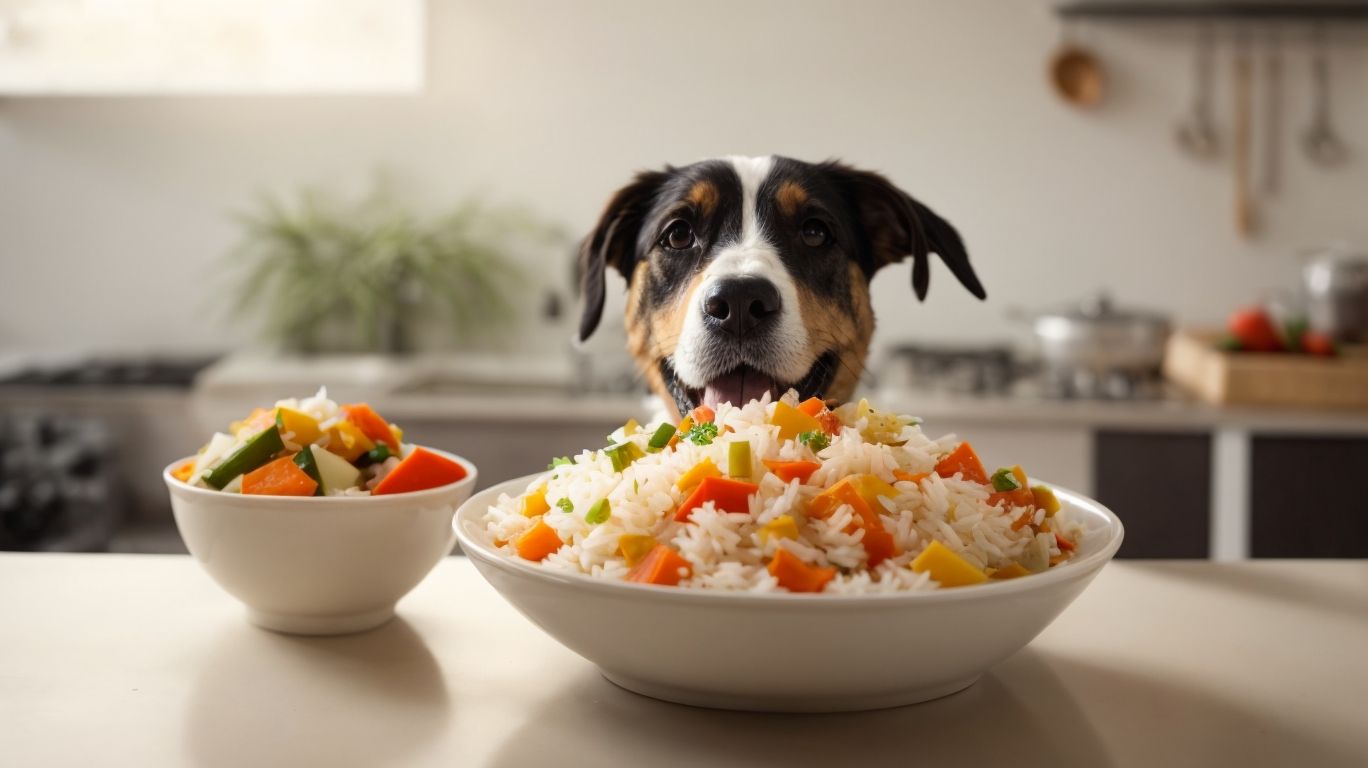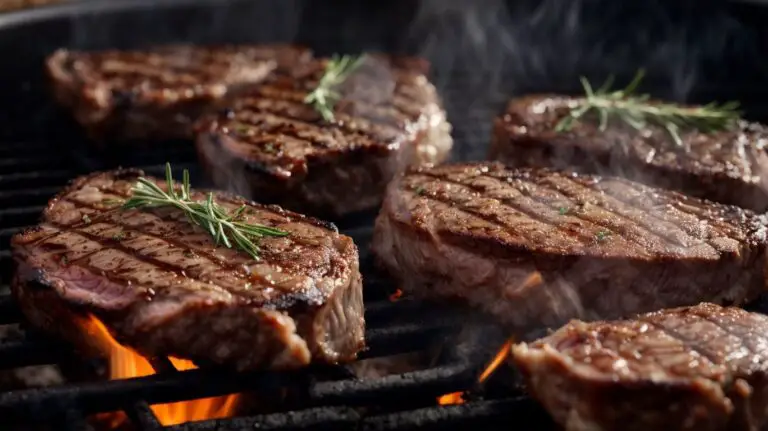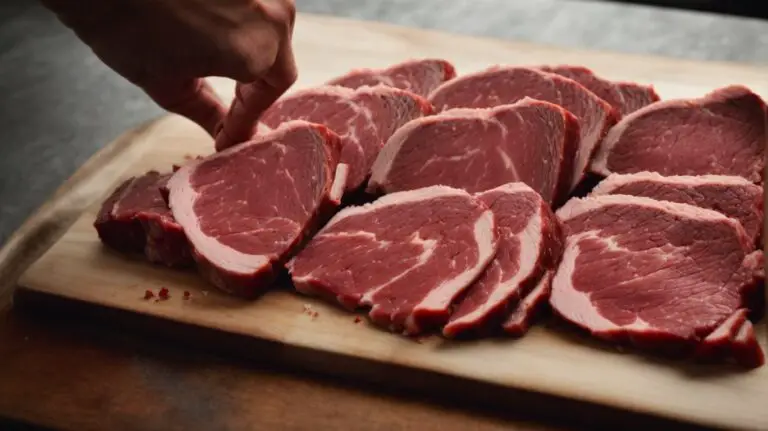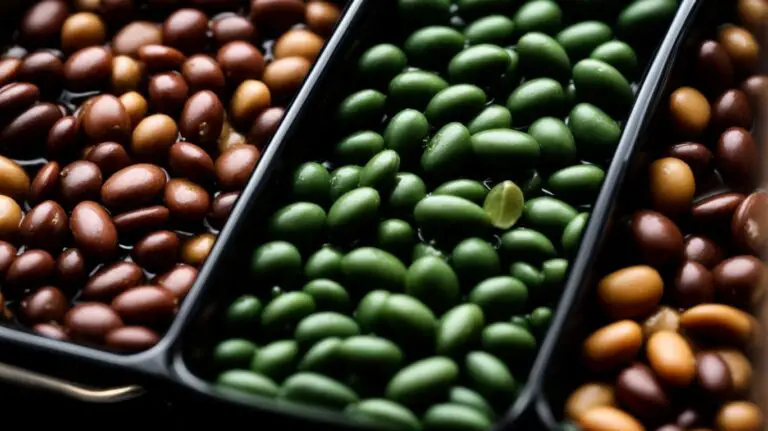How to Cook Rice for Dogs?
Are you looking for a simple and nutritious addition to your dog’s diet?
Cooking rice for your furry friend can provide numerous benefits, from aiding digestion to offering essential nutrients.
We explore the best types of rice for dogs, how to prepare it properly, and whether you can add extra ingredients.
We’ll also discuss serving recommendations, portion sizes, and important precautions to keep in mind.
Let’s ensure your pup’s mealtime is both delicious and healthy!
Key Takeaways:
Why Should You Cook Rice for Your Dog?
Cooking rice for your dog can offer numerous benefits, including improved digestion, essential nutrient provision, and the ability to incorporate it into homemade dog food recipes.
Rice, being an easily digestible carbohydrate, can help alleviate digestive issues such as an upset stomach or diarrhea in dogs. Rice acts as a great source of energy, providing the necessary fuel to keep your furry friend active throughout the day. By adding vegetables, proteins, and healthy fats to rice, you can create perfectly balanced and wholesome meals for your dog, ensuring they receive all the required nutrients.
Helps with Digestion
Cooked rice can be a soothing addition to your dog’s diet, aiding in digestion, alleviating stomach upset, and providing a bland option during bouts of diarrhea.
When dogs experience digestive issues, introducing easily digestible foods like cooked rice can help settle their stomachs. The blandness of rice can be gentle on their system and provide essential nutrition without exacerbating any existing stomach problems. Rice acts as a binding agent, ensuring firmer stools and reducing episodes of diarrhea. The simple composition of rice makes it an ideal choice for dogs with sensitive stomachs or those recovering from gastrointestinal disturbances. Adding some boiled chicken or broth to the rice can further enhance its nutritional value and palatability.
Provides Essential Nutrients
Cooked rice for dogs is not only gentle on the stomach but also provides essential nutrients like protein, vitamins, and minerals necessary for their overall health.
Rice is a great source of carbohydrates that offer sustained energy for active dogs. It contains valuable minerals such as iron, magnesium, and phosphorus, which are crucial for bone health and muscle function.
- Protein: Cooked rice complements other protein sources in a dog’s diet, aiding in tissue repair and growth.
- Vitamins: Brown rice, in particular, is rich in B vitamins like niacin and thiamine, important for metabolism and overall well-being.
- Minerals: The manganese content in rice supports brain health and the immune system in dogs.
Can Be Used as a Filler for Homemade Dog Food
Incorporating cooked rice into homemade dog food recipes can serve as a wholesome filler, enhancing the overall texture and nutritional profile of the meal.
When included in a dog’s diet, cooked rice can provide a boost of easily digestible carbohydrates, which are essential for sustained energy. The soft texture of the rice helps in creating a satisfying consistency dogs love. This can be beneficial especially when you are trying to encourage a picky eater or transitioning a pet to homemade food. The nutritional value of the meal is also elevated, as rice is a valuable source of vitamins and minerals that contribute to a balanced diet. By incorporating rice, you are not only filling your dog’s tummy but also providing them with essential nutrients for their well-being.
What Type of Rice is Best for Dogs?
Choosing the right type of rice for your dog is crucial, with options including white rice, brown rice, and fragrant basmati rice, each offering unique nutritional benefits.
White rice, being the most easily digestible, is often recommended for dogs with sensitive stomachs or digestive issues. It is also a good source of energy and can be a staple in their diet. On the other hand, brown rice is rich in fiber and promotes better digestion, making it a suitable choice for dogs struggling with constipation. Basmati rice, known for its distinct aroma and long grains, provides a slightly different texture and flavor profile that can entice picky eaters.
White Rice
White rice, easily digestible and mild on the stomach, is a common choice for dogs requiring a bland diet or experiencing digestive issues.
One of the reasons white rice is beneficial for dogs is its gentle nature on the stomach. It helps to soothe digestive discomfort and is often recommended by veterinarians as part of a bland diet for dogs with sensitive stomachs or digestive problems. The simplicity of white rice makes it easy for dogs to digest, making it a suitable option when transitioning to a new diet or recovering from an illness.
Brown Rice
Brown rice, rich in fiber, protein, and essential vitamins, can be a nutritious choice for dogs requiring a heartier dietary option.
When incorporating brown rice into a dog’s diet, the high fiber content aids in promoting healthy digestion and regulating blood sugar levels. The protein in brown rice comes from plant-based sources, making it a great alternative for dogs with sensitivities to animal proteins. The vitamin profile of brown rice includes B vitamins such as niacin and thiamine, which are essential for energy production and overall well-being.
Basmati Rice
Basmati rice, known for its aromatic qualities and distinct texture, can add an interesting dimension to your dog’s meals while offering a different flavor experience.
When incorporating Basmati rice into your dog’s diet, it’s important to note its long grains that retain their shape and separate beautifully when cooked, providing a satisfying texture that can enhance your furry companion’s mealtime. The unique aroma of Basmati rice can also appeal to your dog’s sense of smell, making the eating experience more enjoyable. The delicate flavors of Basmati rice can complement a variety of ingredients in dog food recipes, adding a touch of sophistication to your pet’s dining experience.
How to Prepare Rice for Your Dog?
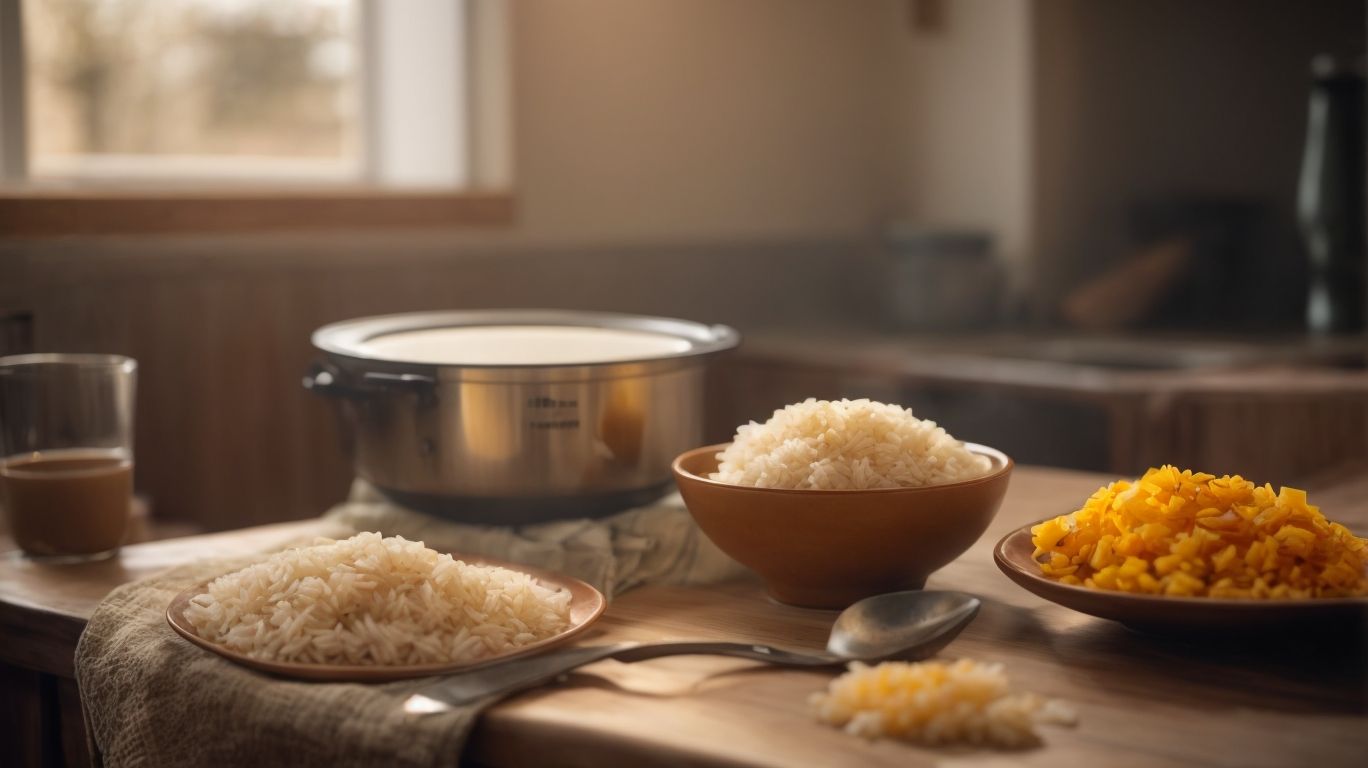
Credits: Poormet.Com – Dennis Allen
Preparing rice for your dog involves rinsing the grains, measuring the correct water-to-rice ratio, and ensuring proper cooking to achieve the desired texture and consistency.
Start by rinsing the rice thoroughly under cold water to remove any excess starch. This step helps prevent the rice from becoming too sticky.
Once rinsed, measure out the appropriate amount of water based on the type of rice and your desired texture. A general rule of thumb is to use two cups of water for every cup of rice.
Next, bring the water to a boil in a saucepan before adding the rice. Reduce the heat to a simmer, cover, and let it cook until all the water is absorbed and the rice is tender.
Rinse the Rice
Rinsing the rice before cooking is essential to remove any excess starch and impurities that may affect the final texture and quality of the cooked grains for your dog.
When you rinse the rice, you are not only cleansing it of dirt and dust but also reducing the amount of starch that can make the grains clump together during cooking, leading to a sticky consistency that might not be ideal for your furry friend. By thoroughly washing the rice, you are also getting rid of any potential contaminants or residues that could be harmful to your dog’s digestive system.
Ensuring that the grains are clean and free from impurities is a crucial step in preparing safe and nutritious meals for your canine companion. Remember, a little extra effort in washing the rice can go a long way in promoting your dog’s health and well-being.
Measure the Water and Rice Ratio
Getting the water-to-rice ratio right is crucial when cooking for your dog, ensuring the grains absorb the appropriate amount of liquid for optimal texture and flavor.
Incorrect water-to-rice ratios can result in soggy or undercooked rice, affecting the overall palatability of the dish. By measuring accurately, you can achieve the perfect balance of moisture and fluffiness, making the meal more enjoyable for your furry companion. This precision also aids in preventing a mushy consistency that may be challenging for your dog to eat comfortably.
The correct ratio contributes to enhancing the flavor profile of the cooked rice by allowing it to absorb just the right amount of seasoning and broth. This leads to a more appetizing and satisfying meal for your pet, encouraging healthy eating habits.
Cook the Rice
Cooking rice for your dog involves simmering the grains until they reach the desired tenderness, ensuring a palatable texture suitable for your pet’s consumption.
It’s essential to remember that dogs have different digestive systems than humans, so the consistency of the rice plays a crucial role in their overall well-being. Properly cooked rice should be soft enough to be easily chewed and digested by your furry friend. The ideal texture is slightly sticky but not mushy, offering a balance between firmness and fluffiness.
Can You Add Other Ingredients to the Rice?
Enhancing rice for your dog by adding vegetables and protein sources can create a balanced meal that caters to their nutritional needs and taste preferences.
When you mix vegetables and protein with rice, you introduce a range of essential nutrients that can support your furry friend’s overall health. Vegetables like spinach, carrots, and peas offer vitamins, minerals, and fiber, aiding in digestion and strengthening the immune system. Incorporating protein sources such as chicken, beef, or fish ensures that your dog receives the necessary amino acids for muscle development and energy production.
By diversifying your dog’s diet with these ingredients, you not only provide a tastier meal but also prevent the monotony that can come from feeding the same food every day. Dogs, like humans, enjoy variety and different flavors, making mealtime an enriching experience for them.
Vegetables
Mixing vegetables with rice can introduce essential nutrients, vitamins, and fiber into your dog’s diet, enhancing the overall nutritional value of the meal.
Vegetables are packed with essential nutrients like vitamins A, C, and K, as well as minerals such as potassium and manganese, which are beneficial for your furry friend’s health. Including vegetables in your dog’s rice can promote better digestion due to their high fiber content, aiding in regulating bowel movements. The fiber from vegetables helps in keeping your dog feeling full and satisfied, which can be useful for weight management. By adding a variety of colorful veggies like carrots, broccoli, and spinach, you not only enhance the taste but also provide a diverse range of nutrients to support your dog’s overall well-being.
Protein Sources
Incorporating protein sources like chicken or beef into rice dishes for your dog can boost their protein intake, supporting muscle health and overall well-being.
Protein is crucial for dogs as it plays a vital role in muscle development, repair, and overall bodily functions. By adding high-quality protein sources to their meals like chicken or beef, you ensure that your furry companion receives the essential amino acids required for strong and healthy muscles. This not only aids in maintaining an optimal body condition but also boosts their energy levels and supports their immune system. These protein sources enrich the rice with a plethora of nutrients, creating a balanced and nutritious meal for your canine friend.
How to Serve Rice to Your Dog?
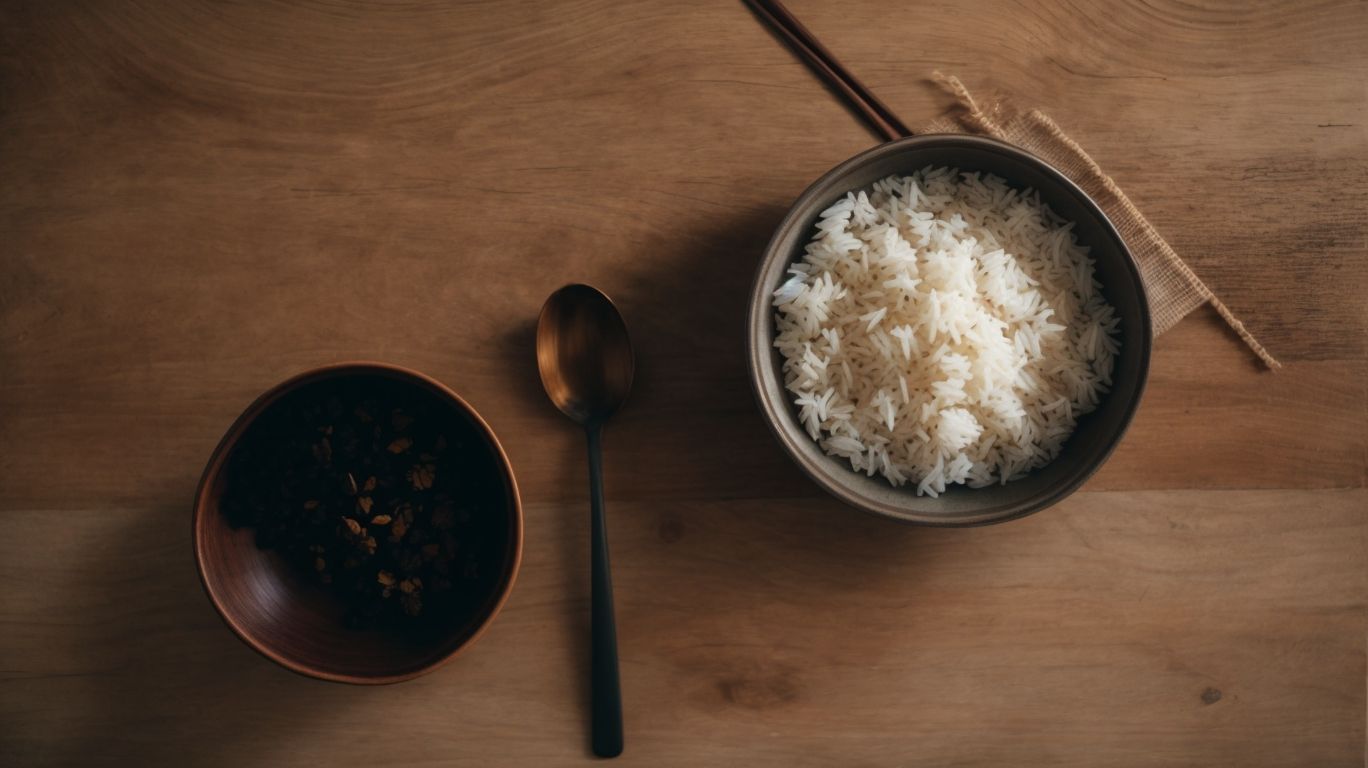
Credits: Poormet.Com – Wayne Taylor
Before serving rice to your dog, ensure it has cooled down to a safe temperature and consider mixing it with other foods to enhance flavor and appeal.
It’s crucial to remember that dogs can’t handle hot foods as well as humans, so the rice should be comfortably warm before offering it to them. Mixing in some cooked meat, vegetables, or even a bit of chicken broth not only adds variety but also makes the meal more palatable for your furry friend. Consider incorporating small amounts of healthy fats like coconut oil or olive oil to improve the taste and provide additional nutrients.
Allow the Rice to Cool
Allowing the rice to cool before serving your dog is essential to prevent any risk of burns or discomfort, ensuring a safe and enjoyable dining experience for your pet.
When rice is freshly cooked, it tends to retain a substantial amount of heat, which can be harmful if fed immediately to your furry companion. Dogs can be sensitive to temperature, and serving them hot food may lead to mouth or digestive issues. To mitigate any potential hazards, it is advisable to let the rice cool down to room temperature or slightly warmer before offering it to your dog. This simple step not only promotes safety but also enhances the palatability of the rice, making it more enjoyable for your pet.
Mix with Other Foods
Mixing rice with other foods for your dog can introduce variety and additional nutrients, creating a more balanced and enjoyable meal experience for your canine companion.
Adding a variety of ingredients alongside rice can offer a broader spectrum of essential nutrients, promoting overall health and well-being for your furry friend. Veggies like carrots, peas, and sweet potatoes can add vitamins and fiber, while protein sources such as cooked chicken or beef contribute to muscle maintenance. Incorporating these elements into your dog’s diet not only enhances the meal’s taste but also ensures they receive a well-rounded and nourishing menu. Experimenting with different combinations can keep mealtime exciting and encourage your dog to try new flavors.
How Much Rice Should You Feed Your Dog?
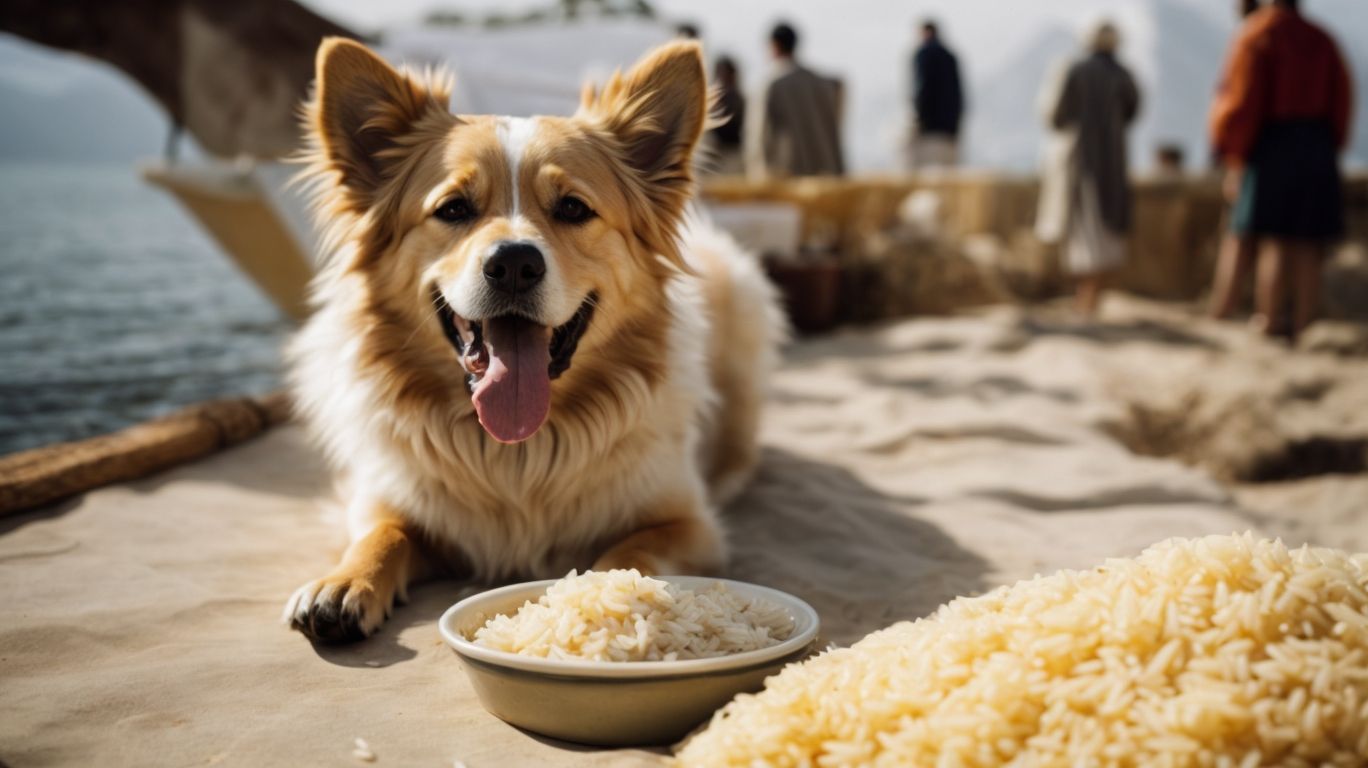
Credits: Poormet.Com – David Garcia
Determining the appropriate amount of rice to feed your dog depends on factors like size, activity level, and dietary requirements, ensuring a balanced and tailored meal plan.
For small dogs with low activity levels, a quarter to half a cup of rice may suffice per meal. Medium-sized dogs with moderate activity may benefit from half to one cup. Larger breeds and highly active dogs might require one to two cups per meal, always adjusting based on their individual needs. It’s important to monitor your dog’s weight and energy levels to fine-tune their rice portions, ensuring they receive adequate nutrition without overfeeding.
Precautions and Warnings
Before incorporating rice into your dog’s diet, consult with your veterinarian to ensure it aligns with their health needs, and avoid adding seasonings or ingredients that may trigger allergic reactions.
Dogs, just like humans, can have varying reactions to different foods, and it’s crucial to be cautious when introducing new elements to their diet. Your veterinarian will be able to provide valuable guidance on how to incorporate rice safely into your dog’s meals. When preparing rice for your furry friend, remember to keep it plain and free from any spices or additional flavorings that may upset their stomach or lead to negative health effects. Taking these precautions can help maintain your dog’s well-being and prevent any adverse reactions.
Consult with Your Veterinarian
Seeking advice from your veterinarian regarding your dog’s diet, including the addition of rice, can ensure their nutritional needs are met and any health concerns are addressed.
Consulting a veterinarian is crucial as they can provide personalized guidance based on your dog’s breed, age, activity level, and any existing health conditions. Veterinarians possess the expertise to recommend the optimal balance of nutrients, proteins, and carbohydrates that your furry companion requires. By discussing the inclusion of rice in your dog’s diet, veterinarians can give tailored recommendations to prevent nutritional deficiencies or excesses.
Avoid Seasonings and Additives
When preparing rice for your dog, it’s crucial to avoid seasonings and additives that could be harmful to their health, maintaining a simple and safe dietary approach.
Seasonings and additives commonly used in human food, such as garlic, onion, salt, and certain spices, can upset a dog’s stomach or even be toxic to them. By sticking to plain, unseasoned rice, you reduce the risk of any adverse reactions.
A simple diet is often easier for dogs to digest, promoting better overall health and well-being. A plain rice meal provides essential carbohydrates for energy without unnecessary additives. By focusing on the simplicity of ingredients, you prioritize your dog’s safety and nutritional needs.
Watch for Any Allergic Reactions
Monitor your dog closely for any signs of allergic reactions after feeding rice, such as itching, swelling, or gastrointestinal distress, and seek veterinary assistance if needed.
Understanding the potential allergic reactions in dogs is crucial as they may exhibit symptoms like rashes, hives, or difficulty breathing. Observing your pet attentively can help you catch these signs early. In severe cases, allergic reactions can escalate quickly, leading to anaphylaxis, which necessitates immediate medical attention.
Recognizing these symptoms promptly allows dog owners to take proactive measures to prevent further complications. A timely visit to the vet can help diagnose the allergy source, whether it’s rice or another ingredient, and provide appropriate treatment. Taking quick action is key to ensuring your furry friend’s well-being and health in case of an allergic reaction.
Frequently Asked Questions
How to Cook Rice for Dogs?
To cook rice for dogs, start by rinsing the rice thoroughly to remove any excess starch. Then, use a ratio of 2 cups of water for every 1 cup of rice and bring it to a boil. Once boiling, reduce the heat to low and let it simmer for 18 minutes. Finally, let the rice cool before serving it to your dog.
Can I add any flavorings when cooking rice for my dog?
It is best to keep the rice plain when cooking for your dog. This means no salt, oil, or other seasonings. Dogs have sensitive stomachs and too much salt or spices can cause digestive issues. If you want to add some flavor, you can mix in a small amount of cooked, lean meat or vegetables after the rice is cooked.
Is it necessary to cook rice for my dog or can I just feed it raw?
It is recommended to cook rice for your dog as raw rice can be difficult for them to digest and can cause gastrointestinal problems. Cooking the rice also helps to make it more palatable for your dog.
Can I use any type of rice when cooking for my dog?
Yes, you can use any type of rice when cooking for your dog. Brown rice, white rice, and even wild rice are all safe for dogs to eat. However, brown rice is the most nutritious option for your dog as it contains more fiber and nutrients than white rice.
How much rice should I feed my dog?
The amount of rice you should feed your dog depends on their size, age, and activity level. As a general rule, it is recommended to give dogs 1/3 to 1/2 cup of cooked rice for every 20 pounds of body weight. It is important to consult with your veterinarian to determine the appropriate amount for your specific dog.
Can I store leftover rice for my dog?
Yes, you can store leftover cooked rice for your dog in an airtight container in the refrigerator for up to 3 days. It is important to make sure the rice is cooled before storing and to reheat it before serving. However, it is recommended to only prepare enough rice for one serving at a time to ensure freshness and prevent bacteria growth.

